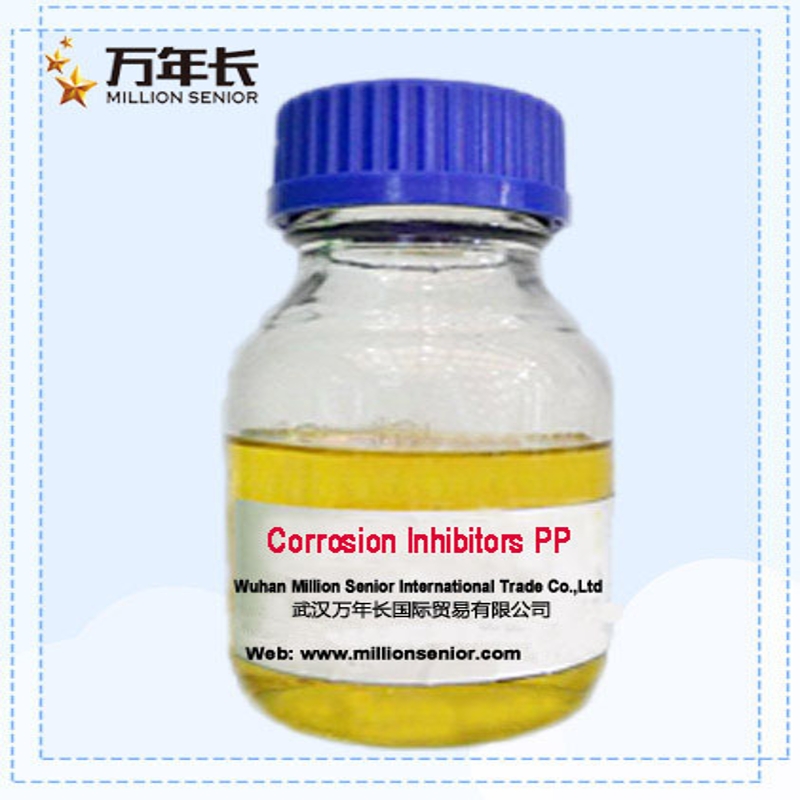-
Categories
-
Pharmaceutical Intermediates
-
Active Pharmaceutical Ingredients
-
Food Additives
- Industrial Coatings
- Agrochemicals
- Dyes and Pigments
- Surfactant
- Flavors and Fragrances
- Chemical Reagents
- Catalyst and Auxiliary
- Natural Products
- Inorganic Chemistry
-
Organic Chemistry
-
Biochemical Engineering
- Analytical Chemistry
- Cosmetic Ingredient
-
Pharmaceutical Intermediates
Promotion
ECHEMI Mall
Wholesale
Weekly Price
Exhibition
News
-
Trade Service
A few days ago, the results of the "Research on the Path to Peak Carbon Dioxide Emissions in China's Petrochemical and Chemical Industry" jointly released by the Carbon Neutralization Research Center of the Environmental Planning Institute of the Ministry of Ecology and Environment and the China Petroleum and Chemical Industry Federation show that the petrochemical and chemical industry emits emissions under the current scenario.
However, through energy structure adjustment, energy-saving and low-carbon technological transformation, low-carbon recycling and high-efficiency utilization, industry emission reductions can be achieved
.
Under the emission control scenario, the industry is expected to achieve carbon peak around the end of the "15th Five-Year Plan"
.
The petrochemical industry is concerned and the emission control scenario can reach its peak
The petrochemical industry is one of the main sources of carbon dioxide (CO₂) emissions in China
.
Whether the industry can reach the peak on time before 2030 is not only the focus of social concern, but also will have a huge impact on whether the industrial sector and the whole country can reach the peak on time and the peak
.
According to Weng Hui, a member of the research team and senior engineer of the Industrial Development Department of the Petrochemical Federation, the research team based on data from various sources such as China Statistical Yearbook, industry associations, and corporate carbon verification, and on the basis of analyzing historical emission trends, identified a high degree of energy concentration.
key industries and products, using scenario analysis to target oil refining, ethylene, propylene, para-xylene and synthetic ammonia in the three sub-sectors of oil and gas extraction, petroleum, coal and other fuel processing, and chemical raw materials and chemical products manufacturing.
For key products, forecast the output and carbon emission intensity under the baseline scenario and emission control scenario, and the carbon dioxide emission trend of the petrochemical and chemical industry from 2021 to 2035
.
Under the emission control scenario, the petrochemical industry is expected to peak around the end of the "15th Five-Year Plan"
.
The research team emphasized that predicting the changing trend and peaking situation of CO₂ emissions in the petrochemical and chemical industry in the future, and identifying the peaking path, can provide targeted suggestions for the low-carbon development of the industry, and enable the industrial sector to achieve carbon peaking and green and low-carbon transformation as soon as possible.
Provide reference and reference
.
The three major industries are differentiated, and the large chemical industry has basically reached its peak
Research shows that the current energy consumption in the petrochemical and chemical industry is highly concentrated
.
During the "13th Five-Year Plan" period, the proportion of energy consumption in the oil and natural gas extraction industry, petroleum coal and other fuel processing industry, chemical raw material and chemical product manufacturing industry in the total energy consumption of the entire industry is basically stable at about 95%
.
Among them, the energy consumption of chemical raw materials and chemical products manufacturing industry accounts for about 55.
2% of the energy consumption of the whole industry, and it will increase by about 53.
9% from 2010 to 2020; the energy consumption of petroleum, coal and other fuel processing industries accounts for about 34.
7%, From 2010 to 2020, it will increase by about 98.
9%; the energy consumption of the oil and natural gas exploration industry accounts for about 5.
3%, and its energy consumption first increases and then decreases.
In 2020, the energy consumption is still 1.
7% lower than the peak year (2014)
.
"According to industry statistical habits, the petrochemical and chemical industry can be divided into three sub-industries, namely the oil and gas exploration industry, the petrochemical industry, and the chemical industry.
The carbon emission levels of different industries have different trends
.
" Weng Hui said that the research shows that the petrochemical industry and Carbon emissions from the oil and gas exploration industry will continue to grow, and it will also be the main source of carbon emissions from the petrochemical and chemical industry in the future
.
In general, under the emission control scenario, the petrochemical and chemical industry is expected to peak between 2028 and 2030, and carbon emissions will increase by 3 × 10⁸ to 4 × 10⁸ tons compared with the base year
.
According to Weng Hui, in the second half of the "Thirteenth Five-Year Plan", the main products of the chemical industry have been in a state of relatively excess production capacity and the output has basically reached the peak.
After that, the industry entered a plateau period, and the overall level was flattened.
Therefore, the carbon emissions of the chemical industry have basically peaked
.
Emission reduction path is gradually clear, structural adjustment is the key
The research team proposed that, according to the characteristics of the industry, the emission reduction of the petrochemical industry can be achieved through energy structure adjustment, energy saving and low-carbon technological transformation, low-carbon recycling and efficient use of energy
.
Among them, the key measures to reach the peak of the petrochemical and chemical industry are: adjusting product structure and controlling low-end production capacity, reducing oil production and increasing chemical production by reducing the output scale of refined oil and promoting the development of refining and chemical integration, and controlling excess production capacity of chemical fertilizers, caustic soda, calcium carbide and other products , low-end production capacity; advocate saving resources, improve resource recycling, reduce waste of resources by improving the utilization rate of fertilizers, prolong the service life of plastic products, and improve the recycling system of waste plastics for packaging; strengthen the control of self-provided power plants, existing coal-fired boilers Replace with renewable energy; in terms of standard system, promote the implementation of energy-saving projects by improving energy efficiency carbon emission standards, implement total control, and promote inclusion in the carbon market for management and control
.
"Product output in the petrochemical and chemical industry is the key to determining whether the industry can reach its carbon peak
.
We should further strictly control new low-end production capacity, introduce production capacity replacement policies, strengthen production capacity replacement supervision, and control the growth rate of industry production capacity
.
" Weng Hui said
.
Specifically, it is necessary to implement oil reduction and increase chemical optimization to optimize the product structure, reduce the output scale of refined oil, and promote the integrated development of refining and chemical industry.
The yield of raw chemical light oil will reach 14% by 2025
.
Reasonably control the total production capacity, and implement “reduction and replacement” of production capacity for new, renovated, and expanded projects in industries with excess capacity such as fertilizers, caustic soda, soda ash, and calcium carbide; Repeated construction of end production capacity, while implementing "reduction and replacement"
.
Through the adjustment of industrial structure, the degree of integration and intensification of oil refining and petrochemical industrial bases, petrochemical and chemical industrial parks will be improved
.
Carry out carbon emission assessments of new production capacity, encourage the construction of projects with low carbon emissions per unit of product output, and prohibit or restrict the implementation of high carbon emissions and low output projects
.
It is understood that as 2030 is approaching, under the guidance of top-level design such as the "Opinions on Completely Accurately Implementing New Development Concepts and Doing a Good Job in Carbon Neutralization" issued by the central government, the path of carbon peaking in the petrochemical and chemical industry has become increasingly clear.
.
The carbon peaking action plan for the petrochemical and chemical industries and key industries, which has attracted much attention, will be released this year
.
The "Benchmarking Level and Benchmark Level of Energy Efficiency in Key Fields of High Energy-consuming Industries (2021 Edition)" recently released by five departments including the National Development and Reform Commission also proposed to guide enterprises in oil refining, coal chemical industry, soda ash, ethylene, synthetic ammonia, fertilizer and other enterprises to carry out energy conservation in an orderly manner.
Carbon reduction technology transformation, improve production and operation energy efficiency, resolutely eliminate backward production capacity, backward technology and backward products in accordance with laws and regulations; strengthen the promotion and application of green and low-carbon technology and equipment; implement transformation, upgrading and elimination in batches within a time limit
.
Li Yongliang, deputy director of the Industrial Development Department of the Petrochemical Federation, said that at present, 30% of the industry's production capacity cannot reach the benchmark level proposed in the "Energy Efficiency Benchmark Level and Benchmark Level in Key Fields of High Energy-consuming Industries (2021 Edition)", which needs to be divided into batches within three years.
Implement transformation, upgrading and elimination
.
The Petrochemical Federation and China Chemical Energy Conservation Technology Association are researching and proposing a series of technical directions for energy-saving upgrading and transformation in the petrochemical and chemical industry to guide the industry to improve the overall energy efficiency level
.







